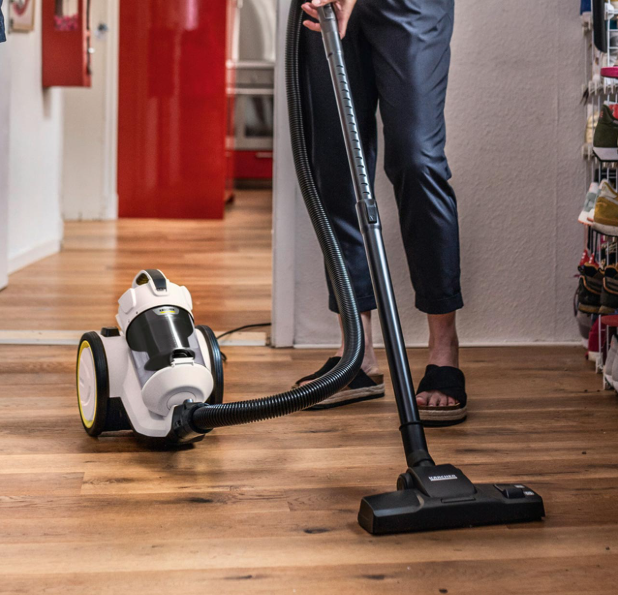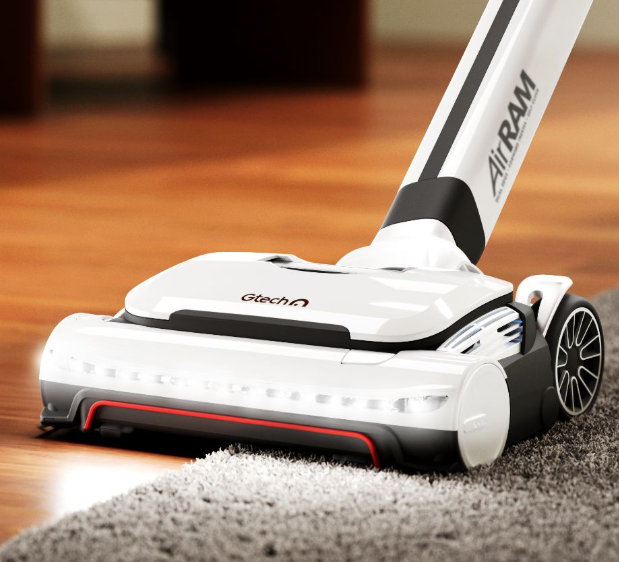Understanding how often to change vacuum cleaner bag is essential for maintaining peak performance and ensuring your home stays clean and healthy. In 2025, as vacuum cleaners evolve with advanced filtration and eco-friendly designs, knowing the right time to replace your vacuum bag can enhance efficiency, prolong your machine’s lifespan, and support sustainable cleaning practices. Whether you’re mastering your vacuum cleaner setup or troubleshooting issues like reduced suction, this guide explores the factors influencing bag replacement frequency, offering practical tips for both traditional and modern models. By keeping your vacuum in top shape, you’ll optimize your how to use a vacuum cleaner routine and maintain a spotless home with minimal environmental impact.
Vacuum cleaner bags serve as the heart of bagged models, trapping dust, dirt, and allergens to keep your air clean. However, overfilling or neglecting them can lead to clogs, poor suction, and even motor strain. With the rise of portable vacuum cleaner options and eco-conscious designs, manufacturers now offer bags made from recyclable materials, aligning with sustainability trends. This article will break down how often you should change your vacuum bag, factoring in usage, household conditions, and bag type, while providing actionable vacuum cleaner tips for maintenance. For more insights on keeping your device running smoothly, check out this comprehensive vacuum cleaner resource.
Factors Influencing How Often to Change Vacuum Cleaner Bag
The frequency of changing your vacuum cleaner bag depends on several variables, including household size, cleaning habits, and the type of debris you encounter. On average, most households should replace their vacuum bag every 1-2 months, but heavy use or specific conditions may require more frequent changes. Let’s explore the key factors to consider when determining how often to change vacuum cleaner bag.
Household Size and Activity Level: Larger households with more people generate more dust, dirt, and pet hair, necessitating bag changes every 3-4 weeks. If you have kids or pets, expect to replace bags closer to monthly due to increased debris like fur, crumbs, or tracked-in dirt. Smaller households with minimal foot traffic may stretch changes to 8-10 weeks.
Cleaning Frequency: If you vacuum daily, as is common in homes with allergies or heavy shedding pets, bags fill faster, often requiring replacement every 2-3 weeks. For weekly how to clean with a vacuum cleaner sessions, a bag may last 6-8 weeks, depending on capacity.
Bag Type and Capacity: Standard bags hold 2-4 liters, while high-capacity models in uprights can store up to 6 liters, extending replacement intervals. High-efficiency bags, like those with HEPA filtration, trap finer particles, filling up faster but improving air quality. Reusable cloth bags, common in eco-friendly models, can be emptied and reused, reducing waste but requiring regular vacuum cleaner cleaning.
Debris Type: Fine dust, such as drywall particles or pollen, clogs bags quicker than larger debris like pet hair. Homes with carpets collect more embedded dirt, filling bags faster than hard-floor environments.
For tailored advice on your specific model, this cleaning guide offers detailed maintenance schedules and bag compatibility tips.
Signs It’s Time to Change Your Vacuum Cleaner Bag
Even with a general timeline, certain indicators signal when a bag needs replacing. Recognizing these signs prevents performance issues and simplifies vacuum cleaner troubleshooting. Here are the top cues:
- Reduced Suction Power: A full bag restricts airflow, weakening suction. If your vacuum struggles to pick up debris, check the bag first.
- Visible Fullness: Many bags have fill lines or transparent windows. If the bag appears 75-80% full, replace it to avoid strain on the motor.
- Unpleasant Odors: Trapped debris can cause musty smells, especially in homes with pets. Odor-neutralizing bags help, but a persistent smell signals a change is overdue.
- Allergen Buildup: For allergy sufferers, a full bag can release trapped particles back into the air, reducing the effectiveness of HEPA systems.
- Bag Damage: Tears or punctures from sharp debris like glass require immediate replacement to prevent dust leaks.
In vacuum cleaner maintenance, checking the bag weekly ensures you catch these issues early, keeping your device efficient.

Bag Types and Their Impact on Replacement Frequency
Not all vacuum bags are created equal, and the type you use affects how often to change vacuum cleaner bag. Understanding the differences helps you choose the right bag for your needs and aligns with eco-friendly trends.
Disposable Paper Bags: Common in budget models, these hold 2-3 liters and need changing every 4-6 weeks with regular use. They’re affordable but less sustainable, contributing to landfill waste.
HEPA Bags: Designed for allergy-prone homes, HEPA bags trap 99.97% of particles down to 0.3 microns. They fill faster due to fine dust capture, often requiring replacement every 3-4 weeks. Their sealed design enhances vacuum cleaner safety by minimizing dust exposure during changes.
Reusable Cloth Bags: Eco-friendly models feature washable cloth bags, which can last years with proper care. Empty and wash them every 4-6 weeks, depending on debris volume, to maintain suction. These align with 2025’s push for sustainable vacuum cleaner cleaning practices.
High-Capacity Bags: Found in uprights like the Shark Navigator, these hold up to 6 liters and may last 2-3 months in low-traffic homes. They’re ideal for large spaces but require careful monitoring to avoid overfilling.
When selecting bags, ensure compatibility with your model to avoid leaks or motor strain. In vacuum cleaner troubleshooting, using non-branded bags can reduce suction, so stick to manufacturer-approved options.
Eco-Friendly Considerations for Vacuum Bags
In 2025, eco-conscious consumers lean towards reusable or biodegradable bags to reduce waste. Cloth bags, washable in cold water, cut down on replacements, saving 10-20 bags annually. Some brands offer compostable paper bags, decomposing in 3-6 months versus traditional bags’ decades in landfills. For vacuum cleaner tips, pair these with bagless models where possible to further minimize environmental impact.
How to Change a Vacuum Cleaner Bag Properly
Knowing how often to change vacuum cleaner bag is only half the equation—proper replacement ensures efficiency and safety. Follow these steps for a seamless process:
- Unplug the Vacuum: Always disconnect power to avoid electric shock, a key vacuum cleaner safety practice.
- Locate the Bag Compartment: Refer to your manual (often found on the manufacturer’s site or in this maintenance tips guide) to access the bag housing, typically under a latch or panel.
- Remove the Full Bag: Gently pull the bag from its slot, holding it upright to prevent spills. For HEPA bags, avoid shaking to keep allergens contained.
- Dispose or Clean: Seal disposable bags in a trash bin; for reusable bags, empty into a compostable bin and wash per instructions.
- Install a New Bag: Align the bag’s collar with the vacuum’s inlet, ensuring a tight seal to prevent leaks.
- Check Filters: While changing, inspect pre-motor or exhaust filters, cleaning or replacing as needed for optimal vacuum cleaner maintenance.
- Test the Vacuum: Run a short cycle to confirm suction and check for leaks.
Change bags outdoors or in a well-ventilated area to minimize dust exposure, especially for allergy sufferers.
Common Mistakes to Avoid
Overfilling bags past 80% capacity strains motors, reducing lifespan by up to 20%. Reusing disposable bags risks tears and leaks, compromising air quality. Always store spare bags in a dry, cool place to prevent degradation.

Maintenance Tips to Extend Bag Life and Vacuum Performance
Proper care reduces how often to change vacuum cleaner bag and keeps your device running smoothly. Incorporate these vacuum cleaner maintenance practices:
- Empty Bins Outdoors: For reusable bags, empty debris into a sealed bin to avoid reintroducing dust indoors.
- Clean Filters Regularly: Rinse washable filters every 1-2 months to maintain airflow and reduce bag strain.
- Check for Clogs: Inspect hoses and brushrolls biweekly to prevent blockages that force bags to work harder.
- Use Eco Modes: Many 2025 models offer energy-saving settings that reduce suction for light debris, extending bag life by 10-15%.
- Store Properly: Keep your vacuum in a dry, dust-free area to protect bags from premature wear.
For persistent issues like low suction, refer to vacuum cleaner troubleshooting guides to check for hidden clogs or worn seals.
Troubleshooting Bag-Related Issues
If suction drops despite a new bag, inspect the bag’s seal or inlet for misalignment. Odors persisting after a change may indicate a dirty filter or canister, requiring a thorough vacuum cleaner cleaning. For reusable bags, ensure they’re fully dry before reinstalling to prevent mold.
Bagless vs. Bagged Vacuums: A Quick Comparison
While bagged vacuums excel in allergen containment, bagless models reduce waste and ongoing costs, aligning with eco trends. Bagless units require emptying every 1-2 weeks but eliminate bag purchases, saving $20-50 yearly. However, they may release more dust during emptying, a concern for allergy-prone homes. For those debating, the best vacuum cleaner guide suggests bagged models for health-focused cleaning and bagless for eco-conscious budgets.
Transitioning to Bagless for Sustainability
If you’re considering a switch, bagless models like Shark’s Stratos or Dyson’s V15 offer sealed systems and washable filters, minimizing environmental impact. They’re ideal for portable vacuum cleaner users needing quick, low-maintenance cleans.
Conclusion: Mastering How Often to Change Vacuum Cleaner Bag for a Cleaner Home
Determining how often to change vacuum cleaner bag hinges on your household’s needs, from pet hair volume to cleaning frequency. By replacing bags every 1-2 months—or sooner for heavy use—you’ll maintain suction, protect your vacuum, and ensure clean air. Embrace vacuum cleaner tips like regular filter cleaning and proper storage to extend bag life and align with 2025’s eco-friendly trends. Whether using disposable HEPA or reusable cloth bags, proper vacuum cleaner maintenance keeps your device efficient and sustainable. For more expert guidance on optimizing your cleaning routine, visit this maintenance tips resource. Keep your home spotless and your vacuum thriving with these simple steps.
(Word count: approximately 2050)